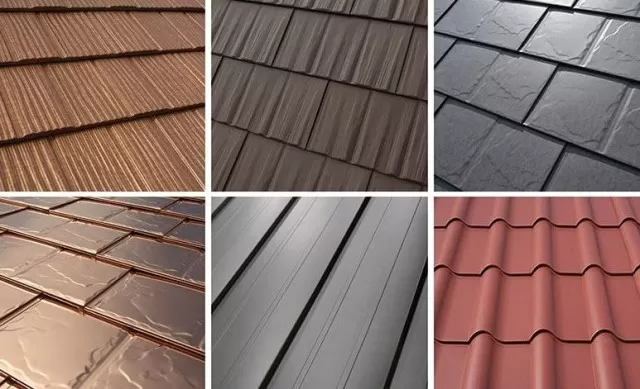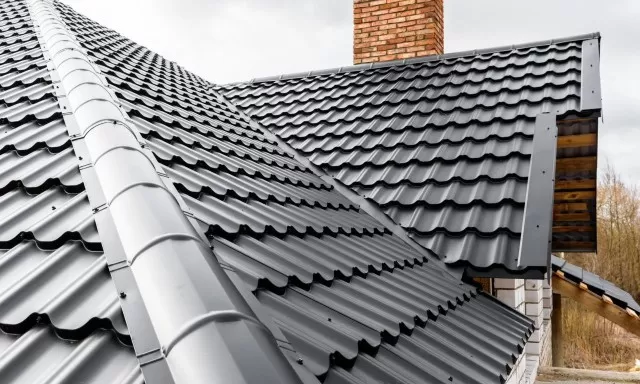4 Roof Shingle Types. If you’re planning to replace your roof, it’s essential to understand the differences among various types of roofing shingles. This knowledge will enable you to make an informed decision and choose The Best Option for your home.
Each type of shingle offers unique characteristics, such as durability, aesthetics, and cost-effectiveness. By familiarizing yourself with these distinctions, you can ensure that your new roof not only enhances the appearance of your home but also provides long-lasting protection against the elements. Take the time to explore the features and benefits of different roofing shingles before making your final selection. Your investment in the right shingle type will contribute to the overall value and performance of your home for years to come.
Exploring Roof Shingle Options: A Guide to Different Types

When it comes to roof shingles, there is a wide variety of options available in the market.
From the commonly used types to the lesser-known antique and emerging styles, each has its own advantages and disadvantages. It is crucial to acquaint yourself with these different types before making a decision on the most suitable shingles for your home.
By understanding their merits and drawbacks, you can confidently choose the best option that aligns with your needs and preferences.
Pros and Cons of Wood Shingles: A Natural and Cost-Effective Option
Wood shingles offer a visually appealing and eco-friendly choice for roofing, typically made from cedar, spruce, or pine.
With a lifespan of 20 to 25 years, they provide a trim and natural look to your home. Moreover, wood shingles come at a reasonable price point, costing more than asphalt but less than clay/concrete and composite tiles, averaging $4. 88 per square foot ($480 per square) according to Home Advisor. While mildew or mold on wood shingles can be easily cleaned with power-washing, damaged individual shingles often require replacement instead of repair. Additionally, the presence of plywood decking beneath the shingles makes replacement more challenging compared to asphalt shingles. However, it’s crucial to consider the climate before opting for wood shingles. Unless you choose ones with a Class A fire rating, they are not suitable for extremely hot and dry or wet climates. They are prone to fire, rot, hail, and termite damage, which can lead to chipping, cracking, or splitting. It is advisable to install wood shingles in regions like the Great Plains, provided the local fire code permits their use.
Metal Shingles: Energy-Efficient and Durable Roofing Option

Metal shingles, made from aluminum, steel, copper, or alloys, offer exceptional energy efficiency compared to other shingle types.
They reflect sunlight instead of absorbing it, resulting in reduced cooling costs over their impressively long lifespan of 50 to 75 years. Moreover, metal shingles are recyclable, making them a sustainable choice compared to asphalt shingles.
These shingles exhibit remarkable resistance to rain, rot, wind, fire, and hail, making them particularly suitable for homes located in regions prone to heavy rainfall, such as the Northwest or Southeast. However, it’s important to note that certain weather conditions can have specific effects on metal roofs.
Hail, for example, may cause dents on steel shingles, and rain on a metal roof can be louder compared to a typical roof (unless additional layers of solid sheathing or insulation are installed at an additional cost). In terms of cost, metal shingles are generally more expensive than asphalt or wood shingles, ranging from $3 to $18 per square foot ($300 to $1,800 per square).
Despite the higher upfront investment, their longevity and energy-saving benefits make them an attractive option for homeowners seeking a durable and sustainable roofing solution.
Slate Shingles: Elegant, Durable, and Snow-Resistant
Slate shingles offer a combination of sleek elegance and rugged durability.
These noncombustible shingles are resistant to heat, hail, and moisture, with a low risk of leaks. They have an impressive lifespan ranging from 50 to 100 years, making them suitable for all climates. Notably, their ability to withstand heavy snowfall makes them an excellent choice for homes in the Midwest. In terms of sustainability, slate shingles are a preferable option compared to materials like clay and concrete. The cost of slate shingles typically falls between $8 to $18 per square foot ($1,100 to $2,000 per square). However, it’s important to consider additional expenses due to their heavy weight, which may require extra framing during installation. Furthermore, finding companies that specialize in slate shingle installation may be more challenging due to their relative scarcity. It’s crucial to note that not all roof structures can support the weight of slate shingles. Consultation with a structural engineer before installation is recommended. Additionally, when it comes to repairing or replacing individual shingles, it is advisable to leave the task to professionals to avoid potential injuries caused by the weight of the shingles.
Clay Shingles: Aesthetic Appeal and Sustainability

Clay shingles are a popular choice for Spanish-style homes in the Southwest, available in various colors and molded into flat, barrel-shaped, or scalloped tiles.
These shingles offer several advantages, including noncombustibility, non-fading properties, and the absence of pollutants. Moreover, clay shingles are environmentally friendly since they are made primarily from water and clay.
However, it is essential to consult with a structural engineer before installing a clay shingle roof to ensure that the home can support the weight of these shingles. Typically, extra framing is required during installation to provide adequate support for the clay-tiled roof.
In terms of cost, clay shingles typically range from $8 to $18 per square foot ($800 to $1,800 per square). With proper maintenance, they can have a lifespan of 40 to 50 years or even longer.
Repairs can be done using roofing cement, but replacing individual tiles on your own can be challenging due to their weight and limited impact resistance. Overall, clay shingles offer both aesthetic appeal and sustainability, making them a desirable choice for homeowners looking for long-lasting and visually appealing roofing solutions, particularly for Spanish-style homes in the Southwest.
*The information is for reference only.